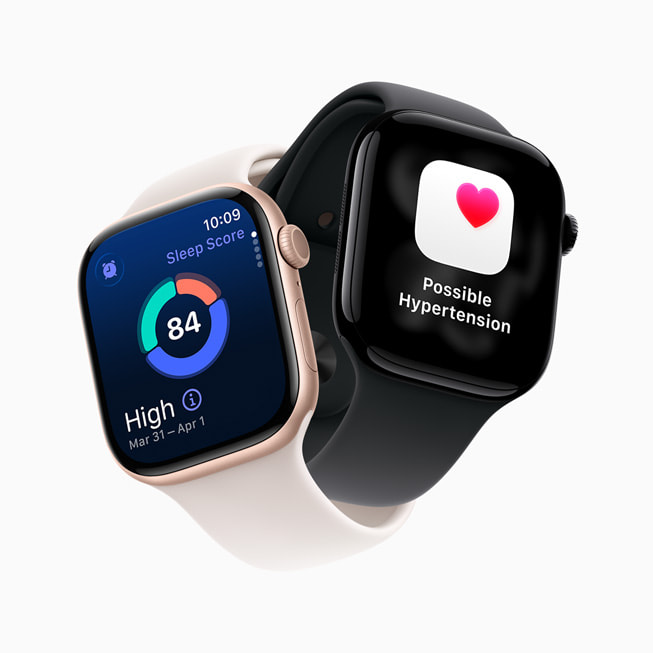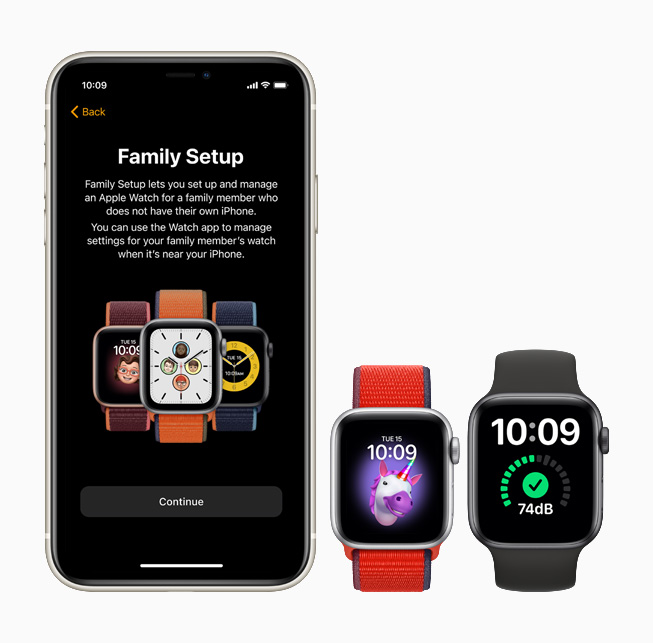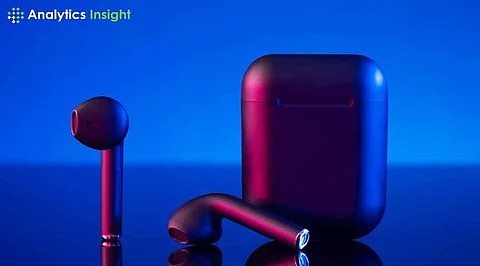The Apple ecosystem has long been celebrated for its seamless integration of hardware, software, and services. From the way AirPods instantly connect to an iPhone to how documents sync across Mac and iPad, the user experience is designed to be cohesive and intuitive. In recent years, however, a new and arguably more profound dimension has emerged as the ecosystem’s centerpiece: personal health. Apple is methodically transforming its devices, particularly the Apple Watch, from lifestyle accessories into powerful, proactive health monitoring tools. This evolution is not just about adding new sensors; it’s a strategic push underscored by a commitment to clinical validation, user privacy, and deep integration. The latest wave of Apple ecosystem news, particularly surrounding advancements in health monitoring and regulatory approvals, signals a fundamental shift. We are witnessing the creation of a comprehensive wellness platform that has the potential to empower individuals and reshape the healthcare industry itself, making recent Apple health news some of the most impactful in the company’s history.
The New Frontier: Apple Watch’s Evolution into a Clinical-Grade Health Device
The journey of the Apple Watch from a fashionable tech gadget to a serious health device has been a deliberate and calculated progression. What began with basic activity tracking has now blossomed into a suite of features capable of providing life-saving insights. This transformation is marked by a relentless pursuit of accuracy and, most importantly, validation from medical regulatory bodies.
From Step Counts to Heart Rhythms
Early iterations of the Apple Watch focused on fitness metrics—counting steps, tracking workouts, and monitoring heart rate during exercise. While useful, these features positioned the device squarely in the wellness category. The turning point in Apple Watch news came with the introduction of features that crossed into the realm of medical monitoring. The ECG app, which received De Novo classification from the FDA, allowed users to take an electrocardiogram from their wrist, detecting signs of atrial fibrillation (AFib), a leading cause of stroke. This was followed by the Blood Oxygen sensor, providing insights into respiratory and cardiac health. Each new sensor and algorithm has pushed the device further into the territory of a personal health guardian.
The Significance of FDA Approval for Hypertension
The latest breakthrough centers on the development and rumored FDA approval of a new system for hypertension (high blood pressure) detection and monitoring. Unlike traditional cuff-based measurements that provide a single snapshot in time, Apple’s approach reportedly uses optical sensors to track blood pressure trends throughout the day and night. This continuous, passive monitoring is a game-changer. It provides a far richer dataset, allowing users and their doctors to understand how lifestyle factors like diet, exercise, and stress impact blood pressure over time.
Receiving FDA approval for such a feature is a monumental step. It elevates the technology from a “wellness insight” to a clinically recognized tool. For consumers, it provides confidence in the data’s reliability. For medical professionals, it opens the door to integrating this data into patient care plans, enabling a more proactive and personalized approach to managing one of the world’s most common chronic conditions. This development is not just an update; it’s a validation of Apple’s entire health strategy.
More Than a Watch: How Health Data Permeates the Apple Ecosystem
The true power of Apple’s health initiatives lies not in a single device, but in the way health data is collected, protected, and made accessible across the entire ecosystem. The Apple Watch is the primary data collector, but the iPhone, iPad, and even Apple TV play crucial roles in creating a holistic and actionable view of a user’s well-being.

The Central Hub: The iPhone and the Health App
The iPhone remains the command center of the Apple ecosystem, and this is especially true for health. The Health app on iOS is a sophisticated dashboard that aggregates data from the Apple Watch, third-party apps, and connected medical devices. Recent iOS updates news has consistently brought enhancements to the Health app, adding features for medication tracking, sleep analysis, and mental health logging. It allows users to visualize long-term trends, identify correlations, and gain a deeper understanding of their overall health. Furthermore, the Medical ID feature, accessible from the lock screen, provides first responders with critical information in an emergency, turning every iPhone into a potential life-saving tool. This deep integration is a core piece of ongoing iPhone news and development.
Privacy and Security: The Bedrock of Apple’s Health Strategy
Collecting sensitive health data at this scale comes with immense responsibility. A cornerstone of Apple’s strategy, and a frequent topic in Apple privacy news, is its unwavering commitment to user privacy. Health data is encrypted on the device and in iCloud, with the user holding the only key. Apple cannot access or read this data. This focus on iOS security is paramount for building trust. Users are more likely to engage with these features and share data with their doctors when they are confident that their most personal information is secure. This privacy-first approach is a significant differentiator in a tech landscape often criticized for data exploitation.
Expanding the Circle: iPad, Apple TV, and Beyond
The health ecosystem extends beyond the watch and phone. An iPad can serve as a powerful tool for reviewing health data on a larger screen, making it ideal for consultations with healthcare providers or for creating a detailed iPad vision board news-style health plan. The integration of Apple Fitness+ with Apple TV showcases another dimension; workout metrics from your Apple Watch are displayed in real-time on your television, creating an immersive and motivating experience. Even the HomePod and HomePod mini can play a role through accessibility features and voice-activated reminders for medications, reinforcing the network effect of the ecosystem. This multi-device strategy is often highlighted in Apple TV marketing news as a key benefit of the platform.
Reshaping Industries: The Ripple Effect of Apple’s Health Innovations
Apple’s foray into clinical-grade health monitoring has implications that extend far beyond its own user base. It is actively reshaping patient-provider relationships, accelerating innovation in related tech fields like augmented reality, and demonstrating the power of a connected accessory ecosystem.
For Patients and Providers: A New Era of Proactive Care
The ability to continuously monitor vital signs creates a paradigm shift from reactive to proactive healthcare. Consider a real-world scenario: a user receives a high heart rate notification, uses the ECG app, and shares the resulting PDF with their doctor. This early warning can lead to a diagnosis of a condition like AFib before a serious medical event occurs. Similarly, a continuous log of blood pressure trends provides a doctor with a more accurate picture than the “white coat hypertension” often seen in a clinical setting. This data empowers patients to take an active role in their health and provides clinicians with the tools to make more informed decisions.
The Augmented Reality Future: Vision Pro and Health

Looking ahead, the intersection of health and spatial computing holds immense promise. The latest Apple Vision Pro news points to a future where health data is not just viewed on a 2D screen but experienced in 3D. Imagine a physical therapist guiding a patient through exercises with AR overlays ensuring perfect form, or a surgeon viewing real-time vitals and 3D medical scans in their field of view during an operation. Future Vision Pro accessories news might even include specialized input devices, like a more precise Apple Pencil Vision Pro or a haptic Vision Pro wand, for manipulating complex anatomical models. This convergence, a key theme in Apple AR news, could revolutionize medical training, diagnostics, and treatment.
The Ecosystem’s Unsung Heroes: Accessories and Connectivity
The strength of the ecosystem is also in its supporting cast of accessories. The latest AirPods news, including for the AirPods Pro and AirPods Max, includes features like Conversation Boost and hearing health monitoring, which contribute to overall well-being. An AirTag, while simple, could be used by caregivers to keep track of loved ones with dementia or to locate essential medical equipment. These smaller pieces of Apple accessories news contribute to a larger, interconnected web of technology designed to support a user’s life and health in myriad ways.
Looking Back and Leaping Forward: From iPod to AI-Driven Wellness
To understand where Apple is going with health, it’s helpful to look at where it’s been. The company’s history of disrupting industries with user-centric design provides a blueprint for its current ambitions in the wellness space, while its advancements in AI are paving the way for what comes next.
Lessons from the Past: The iPod Legacy

Decades of iPod news chronicled how Apple took a nascent technology—the MP3 player—and revolutionized an entire industry through superior hardware and an integrated software ecosystem (iTunes). From the iPod Classic to the iPod Mini, iPod Shuffle, and iPod Nano, each device simplified access to music. The final iteration, the iPod Touch, was essentially an iPhone without the phone, a bridge to the modern app ecosystem. While talk of an iPod revival news story often surfaces due to nostalgia, the true legacy of the iPod is the strategy: take a complex concept, make it accessible and personal, and build a powerful ecosystem around it. Apple is applying the exact same playbook to personal health.
The Role of AI and Siri
Underpinning these health features is a powerful engine of artificial intelligence and machine learning. The algorithms that detect AFib or analyze sleep patterns are incredibly complex, processing vast amounts of sensor data to identify subtle patterns. The future of Siri news will likely involve the voice assistant becoming a more intelligent health partner. Imagine asking Siri, “How did my walk yesterday affect my sleep quality?” and receiving a data-driven insight. As Apple’s on-device processing capabilities grow, Siri could offer personalized health coaching and proactive alerts based on your unique data, all while maintaining the core tenets of Apple’s privacy policy.
Practical Tips and Best Practices for Users
- Set Up Your Medical ID: In the Health app, fill out your Medical ID with emergency contacts, allergies, and medical conditions. It’s accessible to first responders from your lock screen.
- Enable Irregular Rhythm Notifications: In the Watch app, ensure that notifications for high/low heart rates and irregular rhythms are turned on.
- Review Your Privacy Settings: Periodically go to Settings > Health to manage which apps have access to your health data. Be discerning about what you share.
- Utilize Health Sharing: You can securely share a selection of your health data with family members or your doctor, providing peace of mind and facilitating better care.
Conclusion: The Dawn of a New Era in Personal Health
Apple’s journey into health technology is far more than a feature creep; it’s a core pillar of the company’s future. By relentlessly pursuing clinical validation, building upon the seamless integration of its ecosystem, and upholding a stringent commitment to privacy, Apple is setting a new standard for personal wellness technology. The FDA’s recognition of features like hypertension monitoring is not just a milestone for the Apple Watch but a significant moment for the entire consumer health tech industry. It signals a future where the devices we carry every day are no longer passive observers but active participants in our health. As this technology continues to evolve, it promises to empower millions with the information they need to live healthier lives, transforming the landscape of personal and preventative medicine for years to come.











